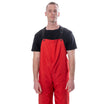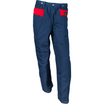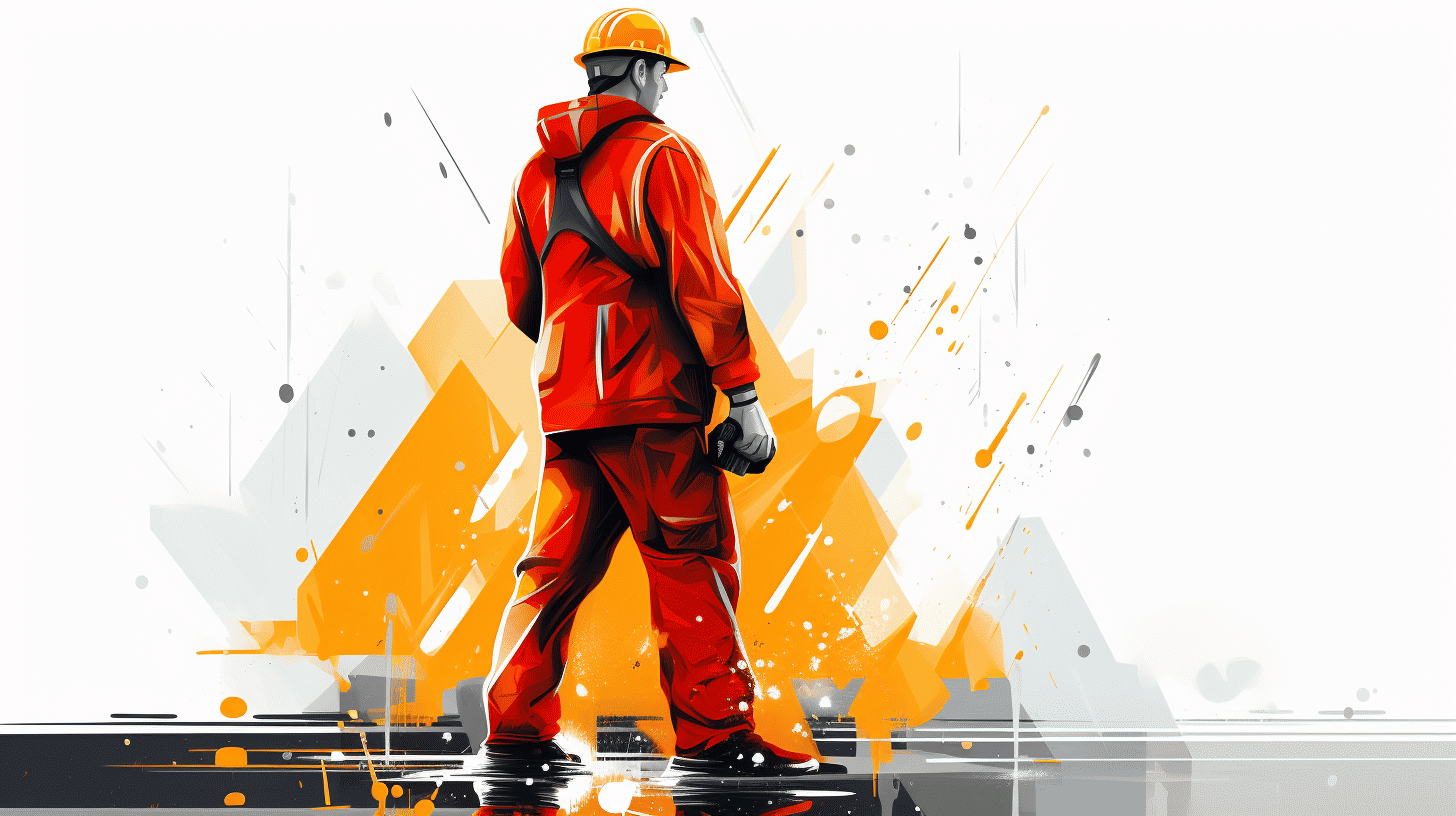Rain or shine, the construction site never pauses. Despite weather challenges, the business of constructing buildings, roads, bridges, and other infrastructures carries onwards. This relentless drive and perseverance are made possible by the proper gear that protects workers from harsh weather – rain gear being among the most critical. But what makes reliable rain gear for construction workers and why is its use so vital? This article will delve into the importance of rain gear, the key features that should be considered when selecting such equipment, the different types available, and how to maintain them effectively. So, whether you're an experienced site worker or just beginning your career in construction, join us on this revealing, rain-filled journey.
Importance of Rain Gear for Construction Workers
The realm of construction may seem daunting, with its towering cranes, heavy machinery, and labor-intensive work. However, seasoned construction workers take it all in stride, often regards it as another day at the 'office'. Amidst the myriad of safety precautions and protocols that these brave individuals heed during their daily operations, one of the most overlooked aspects is the importance of proper rain gear. It not only provides reinforcement against volatile weather but also inherently affects productivity and safety.
Protection Against Weather Elements
Rain may seem like a mere hindrance to the uninitiated. Still, for construction workers maneuvering cumbersome equipment while maintaining precise control, it's a significant environmental challenge. Proper rain gear works as a shield, preventing direct exposure to the rain and thereby averting illnesses associated with constant exposure. High-quality rain gear, such as water-proof jackets and trousers, offer much-needed comfort and protection, effectively acting as the first line of defense against harsh weather conditions. Keeping dry also means staying warm, an essential aspect during colder months when hypothermia can be a real threat.
- Robust construction of rain gear offers protection from rain and wind
- Helps in maintaining body warmth, key in preventing illnesses such as hypothermia and pneumonia
- Specific rain gear designs can also offer protection from harmful sun rays
Maintenance of Productivity
The right gear does more than just offer protection – it significantly boosts productivity. With the comfort and functionality provided by correctly chosen rain gear, construction workers can execute their tasks even in adverse weather conditions. No more need to halt operations because the elements become too challenging. The correct rain gear can empower the workforce to perform their tasks and meet their deadlines effectively, irrespective of a little downpour.
- Comfortable rain gear allows for greater mobility, not hampering workers' ability to move and work efficiently
- Correct gear can reduce the possibility of work stoppages due to unpredictable weather changes
- Can contribute towards achieving deadlines effectively by ensuring work continuity in adverse weather conditions
Promotion of Worker's Safety
In an industry where safety is paramount, the value of having the right rain gear cannot be overstated. Slippery surfaces, limited visibility, and reduced mobility are potential hazards that come with the rain in construction sites. Quality rain gear, with their anti-slip properties and high-visibility designs, can play a critical role in reducing work-related accidents during soggy weather.
- High-visibility rain gear designs can improve visibility, ensuring workers can be easily seen in reduced lighting conditions
- Rainproof gloves help maintain a good grip on tools, minimizing the risk of accidental slips
- Footwear equipped with anti-slip properties can prevent dangerous slips and falls on wet surfaces
In a nutshell, investing in appropriate rain gear for construction workers is not just a matter of comfort but an essential component of their overall safety and productivity. This investment is merely a small price to pay for their invaluable contribution to constructing the foundations and structures of our society.
Key Features to Consider
When shopping for new hiking gear, it's not always easy to narrow down the best options. Many different factors can tempt you to make a purchase. However, it's essential to sift through the sales talk and focus on the essential features that genuinely matter. Let's examine the crucial aspects to look for in hiking gear.
Water Resistant & Breathable Material
When you're out on the trail, weather can be unpredictable. It can be sunny one minute and cloudy the next. Hence, your hiking gear needs to be multipurpose - it must keep you dry during rainfall and also let your skin breathe when it's sunny. Look for materials that are noted as water-resistant and have a 'breathability rating'. Always remember, a good breathable fabric will prevent you from sweating excessively by letting moisture escape, while a rain-resistant material shields you from unexpected downpours.
Durability
When it comes to outdoor equipment, durability is non-negotiable. Rugged terrain and weather changes can be harsh on your gear. Therefore, it should be strong enough to withstand hefty use without showing significant signs of wear and tear. Durability often comes down to the construction quality and the materials used. Go for gear that has been test-proven to be reliable and that lasts for years, instead of products that just look appealing but might not endure rough conditions.
Visibility Enhancement Features
Safety should be your top priority when hitting the trails. Especially if you enjoy night-time or low visibility hiking. Look for gear with built-in visibility enhancement features. Items with reflective accents will ensure you're seen in low light conditions. These features might seem insignificant on a sunny day, but they can be lifesaving during foggy mornings or darker evenings.
Comfort & Size
Finally, don't neglect the importance of comfort and the right fit. Regardless of the durability and weather suitability, if the gear doesn't fit you comfortably, you won't enjoy your hiking experience. Read size charts carefully, pay attention to the adjustable features, and if possible, try items on before buying. Remember; your body needs to move freely while hiking, so avoid gear that's too tight or too loose.
By focusing on these key features - water resistance, durability, visibility, and comfort - you can ensure you're investing not just in any hiking gear, but in the right hiking gear. This approach will significantly enhance your overall hiking experience, making each adventure safe, comfortable, and memorable.
Types of Rain Gear
Whether you are an outdoor enthusiast or prefer simple walks around the block, Mother Nature can sometimes throw a wrench in our plans with unpredictable weather. Being prepared with the correct rain gear is the key to overcoming these obstacles. Let's explore the main types of rain gear available, from the traditional rain suits to the modern and chic reflective jackets.
Rain Suits
These are typically designed as one or two-piece variants, depending on the user's preference. Usually, rain suits encompass both a jacket and trousers. The main features of rain suits include water-resistant outer materials, such as nylon or polyester, and lower-layer breathable fabrics for comfort. Manufacturers often incorporate sealed seams and storm flaps to further improve the product's water resistance. Keep in mind while shopping that a well-fitted rain suit should allow for easy movement and layering while providing maximum coverage.
Rain Boots
Gone are the days when Rain Boots were merely a practical accessory. Today, they make a style statement while safeguarding you from getting soaked during heavy downpours. They come in various styles, patterns, and colors to cater to every individual's taste and needs. Noteworthy features include an insulating inner layer, a high-grip sole for added stability, and a high cut to keep your feet dry.
Water-proof Gloves
Water-proof gloves can be the unsung heroes in a rain gear ensemble. After all, who wants to grapple with wet and chilly hands? These gloves, usually made from latex or neoprene, offer excellent resistance to water and wind. Some higher-end models even offer touchscreen compatibility, so your phone doesn't have to bear the brunt of the rain.
Rain Hats & Helmets
To maintain good visibility in rainstorms, consider including a well-designed rain hat or helmet into your gear set. They often come with wide brims designed to keep water away from your face. Many models are designed to fit comfortably over cycling or climbing helmets.
Reflective Rain Jackets
The best rain gear would not be complete without a mention of reflective rain jackets. Besides providing water resistance, these special jackets offer high visibility in conditions with low light. Even a small reflective detail can help keep cyclists, commuters, and pedestrians safe when it's not only raining, but dark or foggy as well.
In the end, successful rain gear choices boil down to personal preferences, needs, and budget. From necessary essentials like rain suits and boots to specialized items like waterproof gloves and reflective jackets, the market offers something for everyone. Harness this knowledge to make an informed selection before your next encounter with Mother Nature.
Maintaining and Caring For Your Rain Gear
Rain gear is essential for all outdoor enthusiasts. It helps safeguard against the unpredictable weather, keeping us dry during those most unwelcomed showers. However, maintaining your rain gear is not as straightforward as it might seem. It involves a bit more than the simple routine of hang-drying after use. In this article, we'll guide you through effective measures you can take to ensure your gear remains at its best performance and longevity.
Regular Cleaning
Similar to our regular clothes, rain gear also needs occasional cleaning. Many mistakenly believe that regular cleaning can harm the gear's resistance to weather; however, it's usually the contrary. Dirt and oils from your skin can degrade the water-repellent finish that is critical for your gear's performance.
- First, always follow the manufacturer's instructions. If your gear requires a special detergent, use it.
- Use a gentle cycle on your washing machine. Avoid aggressive cycles, which could harm the waterproof material.
- Rinse your rain gear thoroughly to remove all soap residues.
Remember, while cleaning rain gear is crucial, over-cleaning can negatively impact it. So, limit washing to when it's necessary.
Proper Storage
Proper storage is another vital aspect of maintaining top-notch rain gear. It helps to improve the gear's lifespan, keeps it ready for use, and avoids unnecessary wear and tear. To ensure this:
- Allow your rain gear to completely dry before storing it. Damp gear can lead to the growth of mold and mildew, which ruins the gear's integrity.
- Avoid folding and instead hang your rain gear in a cool, dry, and well-ventilated storage area. This prevents unnecessary creases and pressure on the waterproof layer.
- Try to keep the storage area free from extreme temperatures. High heat can degrade rain gear’s waterproof layers, while freezing conditions can make it brittle.
Check for Damage
Routine checks of your gear for any signs of damage is of utmost importance. After continuous use, the gear could have tears or worn-out sections weakening its water-resistance capabilities.
- Regularly inspect your gear for signs of wear and tear or damage. Address minor damages promptly to prevent them from escalating.
- When tears occur, repair them immediately, either by sewing or using a repair tape. Using a professional repair service may also be an option to consider.
Maintaining and caring for your rain gear needn't be a complex task. By employing these simple measures, you can enjoy an extended lifespan of your gear and ensure it provides the best protection, even in the heaviest rainfalls. Have your rain gear ready and enjoy an interruption-free venture, come rain or shine!
Conclusion
Being mindful of your safety and comfort during wet weather conditions on the construction site is paramount. The right rain gear can make all the difference between a productive day at work and an uncomfortable, potentially dangerous one. It's crucial to check the necessary features such as waterproof material, durability, high visibility features, and comfort when selecting your rain gear.
However, you must remember that owning top-notch rain gear is just the first step. Proper maintenance and care will ensure your gear remains effective and lasts longer. Regular cleanings, adequate storage, and frequent checks for damage will keep your gear in tip-top shape.
For reliable, durable, and high-quality rain gear options, Hurricane Raingear's selection should certainly be on your radar. Tailored to meet your needs in rain, shine, or storm, Hurricane Raingear is a testament to the perfect blend of convenience, comfort, and protection against the elements. Make your rainy workdays easier; trust the name that thousands have come to rely upon.
Remember, knowing what to wear on a rainy day is just as important as knowing what tools to bring to a job site. It's your first line of defense against the weather. Make sure you're well-prepared. Your comfort, productivity, and most importantly, your safety could depend on it.
Frequently Asked Questions
-
What are some reliable rain gear options for construction workers?
Some reliable rain gear options for construction workers include waterproof jackets, rain pants, rain boots, waterproof gloves, and waterproof hats or hoods.
-
How can rain gear help protect construction workers?
Rain gear can help protect construction workers by keeping them dry and comfortable during wet weather conditions. It provides waterproof and windproof barriers, preventing water from soaking through and reducing the risk of hypothermia and other weather-related hazards.
-
Are there any specific features to look for in rain gear for construction workers?
Yes, certain features are important in rain gear for construction workers. Look for gear that is made from durable and waterproof materials, has reflective elements for visibility, has adjustable cuffs and hems for a secure fit, and offers ample pockets for storing tools and essentials.
-
How often should construction workers replace their rain gear?
The lifespan of rain gear depends on the quality of the materials and frequency of use. However, it is generally recommended to replace rain gear every 1-2 years or if it shows signs of wear and tear, such as seam leaks, fading colors, or torn fabric.
-
Can construction workers wear their regular work boots in rainy weather?
Regular work boots are not designed to be fully waterproof and may not provide adequate protection against wet conditions. It is recommended for construction workers to invest in specific rain boots that are designed to keep their feet dry and offer better traction on wet surfaces.





















Leave a comment
This site is protected by hCaptcha and the hCaptcha Privacy Policy and Terms of Service apply.